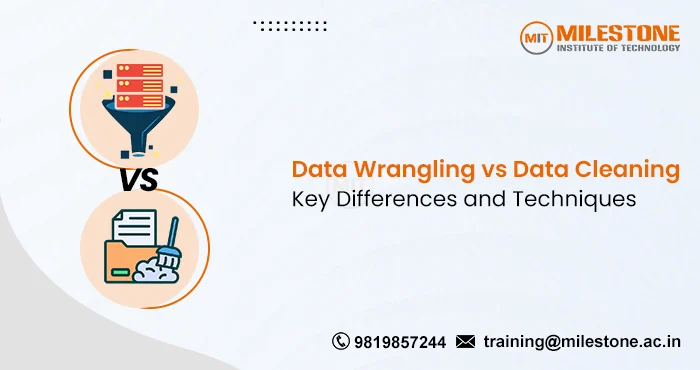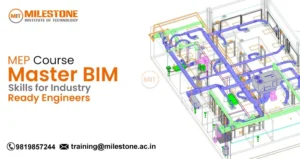In today’s most demanding field of data science, data management plays a crucial role which includes many different steps and processes for obtaining accurate and quality insights from large raw data. In this complete guide we will understand the differences between
data wrangling vs data cleaning which plays an essential role in data preparation. Also we will dive into definitions, differences, processes, and tools which are associated with data wrangling and data cleaning.
What is Data Wrangling?
Data wrangling is the essential process of transforming and manipulating the unprocessed or raw data in more understandable and usable format for proper analysis. Another term used for Data wrangling is Data munging. This involves a set of actions to organize the information, spot trends, and resolve inconsistencies. The main aim of the data wrangling process is to transform the raw data into more clear, structured, and ready for analysis.
Data wrangling includes tasks such as:
- Merging data from different sources: Merging datasets to produce coherent datasets.
- Reshaping data: Changing the structure or format of the data, such as pivoting tables or transposing rows and columns.
- Filtering data: Removing irrelevant or redundant information.
- Handling missing values: Identifying and managing missing or incomplete data.
- Normalizing data: Ensuring that data is in a consistent format.
What is Data Cleaning?
Data cleaning is also known as data cleansing which actually focuses on identifying and removing errors in the data. The primary purpose of data cleaning is to ensure that the data obtained is free of inaccurate insights and inconsistencies that will affect the outcome of the analysis.
Data cleaning tasks include:
- Removing duplicates: Removing duplicate entries ensures that every entry is unique.
- Correcting errors: Fixing typographical errors, incorrect values, or inconsistencies in the data.
- Standardizing data: Ensuring that data follows a consistent format or standard, such as date formats or measurement units.
- Dealing with missing values: Filling in or removing missing data points.
- Validating data: Checking that data falls within expected ranges and adheres to predefined rules.
Difference Between Data Wrangling vs Data Cleaning
Even though data wrangling and data cleaning are related to each other, they are used for different purposes while doing data preparation. The following are some of the main distinctions between data wrangling vs data cleaning:
| Aspect |
Data Wrangling |
Data Cleaning |
| Purpose |
Transforming raw data into a usable format |
Correcting errors and inconsistencies |
| Scope |
Broader, includes data transformation |
Narrower, focuses on error correction |
| Tasks |
Merging, reshaping, filtering, normalization |
Removing duplicates, correcting errors |
| Output |
Structured and ready-to-analyze data |
Clean and accurate data |
| Examples |
Combining multiple datasets, reshaping data |
Fixing typos, removing duplicate records |
| Tools Used |
Data integration and transformation tools |
Data quality and validation tools |
Process of Data Wrangling and Data Cleaning
Data Wrangling Process
The data wrangling process typically involves the following steps:
- Data Collection: Gathering data from various sources, such as databases, APIs, or files.
- Data Exploration: Understanding the data structure, identifying patterns, and assessing data quality.
- Data Transformation: Reshaping and reformatting the data to align with analysis requirements.
- Data Integration: combining information from several sources into one dataset.
- Data Enrichment: Enhancing the dataset with additional information or features.
Data Cleaning Process
The data cleaning process involves:
- Data Inspection: Reviewing the data to identify errors, inconsistencies, and missing values.
- Error Correction: Fixing errors such as typos, incorrect data types, or outliers.
- Data Deduplication: Removing duplicate records to ensure data uniqueness.
- Standardization: Ensuring data consistency by standardizing formats and units.
- Missing Data Handling: Fixing missing values by flagging, imputing, or eliminating them.
Best Tools for Data Wrangling and Data Cleaning
Many tools can help with data cleansing and wrangling; each has special qualities tailored to certain aspects of the data preparation process. Here are some popular tools:
Data Wrangling Tools
- Pandas: A Python library that provides data structures and functions for data manipulation and analysis. It is commonly used for data management operations such as merging, restructuring, and filtering data.
- Alteryx: A data analytics platform that enables users to blend and analyze data from multiple sources. It offers a drag-and-drop interface for data wrangling and transformation.
- Trifacta: A data wrangling tool that uses machine learning to assist users in preparing data. It offers a user-friendly interface for cleaning and transforming data.
Data Cleaning Tools
- OpenRefine: An open-source data cleansing and transformation tool. It allows users to explore large datasets, correct inconsistencies, and clean data efficiently.
- Talend Data Quality: A tool that provides data profiling, data cleansing, and data quality monitoring features. It helps in discovering and fixing data quality problems.
- DataCleaner: A data quality analysis tool that includes capabilities like data profiling, validation, and transformation. It assists in detecting and fixing data quality issues.
Where to learn Data Analysis Course in Mumbai?
If you’re looking for the best place where you can build your
data analysis skills in Mumbai, then there are many training centers and institutes which offer many different IT courses. As per the reviews and research Milestone Institute of Technology is known for best Engineering, IT, and Graphic Designing courses. Their experienced faculty helps in developing students skills from basics to advance by providing personal guidance and live projects. They also provide placements for the master course and internships if required.
Frequently Asked Questions
Why is Data Wrangling and Data Cleaning important in Data Analysis?
Data Cleaning and Data Wrangling are the important processes in data analysis because it helps in extracting accurate data and clean data from the unpolished or raw dataset. These two processes help in reducing unwanted mistakes and inconsistencies which enables clear insights and better decisions. When it comes to quality analysis these two processes actually make it easier to understand the essential trends as well as patterns in the insights.
Can data wrangling and data cleaning be automated?
Yes, several tools provide automation for data wrangling and cleaning activities. However, the level of automation is determined by the complexity of the data and the unique needs of the analysis.
What are the common challenges faced during data wrangling and data cleaning?
The most common challenges faced during data wrangling and data cleaning includes managing the incomplete as well as missing data, tackling the errors and inconsistencies in data, data integration from multiple sources in various formats, while assuring data quality and accuracy.




